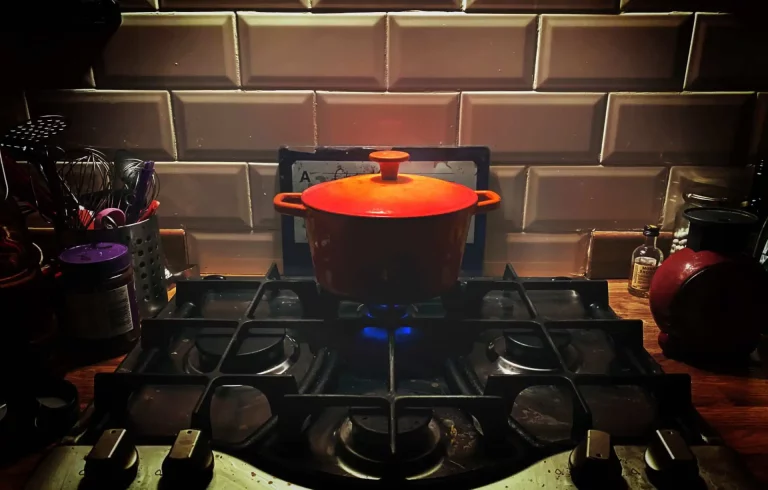Making a stew from leftovers

I made a stew on the weekend but there’s not much point in me sharing the recipe with you because I will never make that stew again. I could hazard a guess at the quantities of ingredients I threw into the pot, but the whole stew existed because of leftover gravy.
On Saturday night, I made a creamy onion gravy from scratch because I’m a Bisto refusenik. It reminds me of trying to make gravies as a kid in Australia with the evil brown powder that is Gravox. It would always culminate in a distressingly lumpy debacle. But I digress. There was maybe 100ml of onion gravy left over from Saturday’s dinner and it formed the basis of Sunday’s stew. At some point during the cooking adventure, I realised I had leftover tomato and pork pasta sauce so I threw that into the stew as well.
While I can’t give you an exact recipe, I can give you a few pointers to give you confidence in freestyle stew cookery.
- Any meat or veg can go into a stew. Even if you’re following a recipe, feel free to add a little of what you fancy (or have lying in the vegetable crisper…), even if the recipe doesn’t specify it.
- I used a thick gravy as the basis for the stew but you can also try a roux – melted butter mixed with a little flour and heated to form a thick paste. Then add the stock of your choice until you have a stew sauce at a consistency you like.
- Frying onion and garlic in melted butter or heated olive oil is always a great way to kick a stew off, rather like making a pasta sauce.
- To keep meat tender, especially chicken, don’t brown it in the pot. Instead, fill a saucepan with wine, stock, lemon juice, lime juice or vinegar, bring to boil and throw the diced meat in until it is cooked. Drain, set aside and add to the pot at the end. It will be tender and have absorbed the flavour of whatever you poached it in.
- There are no rules when it comes to seasoning apart from (to quote my friend and Oklahoma-based sister-in-cookery, Mary) SEASON YOUR DAMN FOOD! Have fun with it. Don’t be shy – try combinations of herbs and spices. Taste as you go. If you go too hard on one flavour, you can usually balance it pretty easily with another flavour. Stews are pretty forgiving like that.
- As well as experimenting with herbs and spices, there are plenty of other condiments you can throw into the stew pot to boost the flavour. A few suggestions include: any mustard, Worcestershire sauce, soy sauce, chutney, sweet chilli sauce, HP sauce, Vegemite, Marmite, pesto, Ghanaian shito paste, redcurrant jelly, black garlic ketchup, kecap manis, hot sauce, applesauce, curry paste, hoisin sauce, olive tapenade, relish, barbecue sauce…
- Leftover vegetables from a roast are a great addition to a stew – as they’ve already been thoroughly cooked, they can go into the pot at the end and warmed through. Likewise, last night’s meat can be repurposed – this is especially handy if there’s only one or two people in your household and you’ve decided to roast a whole chicken, a massive leg of lamb or enough beef to feed an army.
- Mashed potato or dumplings make a great topping for a stew, especially with some melted cheese on top. You can use my dumplings recipe to top your unique stew – click here for the recipe.
- In the same vein as turning leftover sauce, gravy, meat or vegetables into a stew, you can be creative with leftover takeaway – if you couldn’t get through an entire curry, use it as the basis of a bigger curry the next day and freeze in portions.
- Stews freeze well too. It’s a great idea to divide it up into smaller portions and freeze for later, especially if we end up with food shortages in the UK in the new year. For more tips on freezing, click here and here – my co-conspirator Sam is the queen of thrifty freezing.
